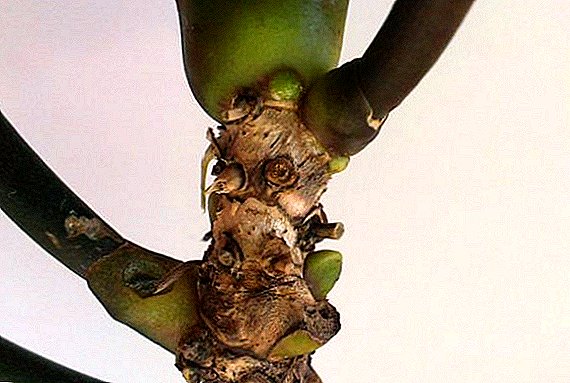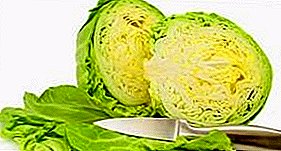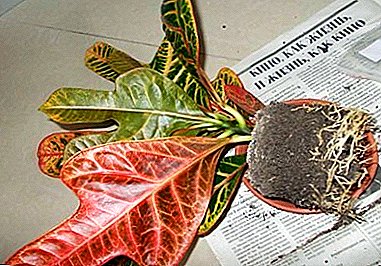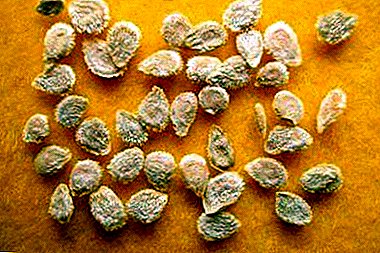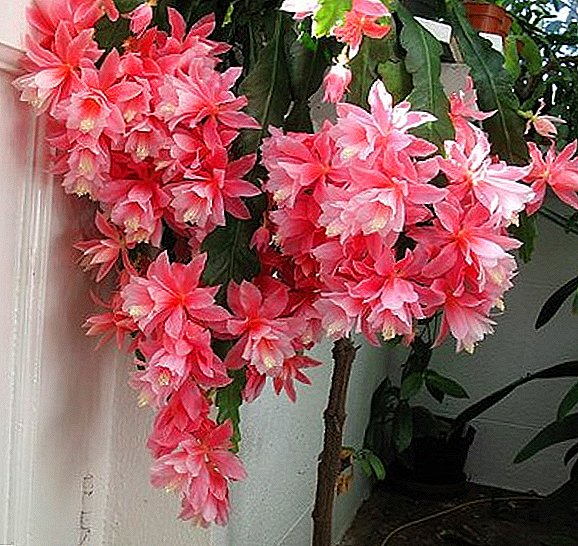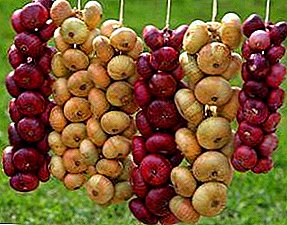 By acquiring or independently building a dacha, you may be faced with various tasks that you have not even previously suspected. One of the first is the equipment of sewer system. The most comfortable option, of course, will be an autonomous system device, but it will require the allocation of a place that is remote from the water intake, as well as the foundation at a certain distance. If the dacha serves you only in the summer period, then the installation of such a sewer system would be inappropriate and expensive. Plus, you will need a plumbing.
By acquiring or independently building a dacha, you may be faced with various tasks that you have not even previously suspected. One of the first is the equipment of sewer system. The most comfortable option, of course, will be an autonomous system device, but it will require the allocation of a place that is remote from the water intake, as well as the foundation at a certain distance. If the dacha serves you only in the summer period, then the installation of such a sewer system would be inappropriate and expensive. Plus, you will need a plumbing.
The most optimal way out of the predicament will be the installation of a dry closet. This design will quickly and simply solve the problem of arranging a latrine. And knowing how to choose the most suitable bio-toilet for the dacha, you protect yourself and others from all sorts of troubles during operation. But before you make a purchase, you need to think and weigh everything well.
Features of the choice of a dry closet for giving
Before choosing biounitaz for giving or at home, it is necessary to decide on the main characteristics of operation. This will help you narrow down the choice of several models among a huge range of products.
Difficulties of choice
 The most simple to maintain are portable models that can be installed in a convenient place for you. For installation of an electric dry closet, voltage wiring is required, which is carried out exclusively according to the instructions with the circuit attached to the device.
The most simple to maintain are portable models that can be installed in a convenient place for you. For installation of an electric dry closet, voltage wiring is required, which is carried out exclusively according to the instructions with the circuit attached to the device.
Ventilation is carried out through a corrugated pipe that is inserted into a specially provided opening in the lid with tank. It is displayed on the roof or through the wall to a height of 3-4 meters. When it is time to clean the waste tank, the pipe has to be removed.
Important! Above the ventilation pipe is better to equip a canopy from the rain and cut holes. So the hood will work much more powerful.In the peat model, a hose that diverts purified liquid waste products into a special tank or into the soil is connected to a fitting located in the bottom of the composting toilet. You may have to dig a special drainage hole and cover it with rubble. In chemical biotoilets reagents are used, the dumping of which cannot be carried out into the soil close to plants. Manufacturers took this into account and began to produce safe supplements. But everything on which there is a mark "ECO", automatically increases in value.
Did you know? Fashion got to the toilet. Connoisseurs of advanced technologies choose Japanese sanitary ware, as their electronic toilet bowls are equipped with many functions. For example, a presence sensor, a water ionizer with silver ions, a backlight in the dark, an automatic flush, heated toilet seat and a built-in audio player with the owner's favorite podcasts. But the more functionality, the higher the cost, respectively.
Criterias of choice
When you have decided on the location and type of device, do not forget about other, not so obvious at first glance, but important characteristics. Guided by them, you quickly decide how to choose a bio-toilet to the country in such a way as to be satisfied and not regret the purchase.  Weight
Weight
Since you will be engaged in cleaning the toilet, its weight plays an important role in choosing a model. A capacity of 13 liters filled with waste will eventually weigh about 15 kg, and a full tank of 20 liters will weigh about 23 kg. Here it is also necessary to immediately determine the issue of transferring the tank to the place, which is allocated for the discharge of waste.
Volume of the tank
The first thing you need to decide when deciding which biotoilet to choose is the volume of the waste accumulation tank. If you take a nominal capacity of 13 liters, a family of three people will fill it in about three days. On average, these toilets are designed for 25-30 applications, after which the toilet should be cleaned. Under similar conditions, a tank of 20 liters is enough for an average of 50 uses and the same family will fill it in a week.
Dimensions
 If people who will use a dry closet are above average growth, then small models - about 31 cm in height - will not be a worthwhile acquisition. Standard sizes - 42-46 cm - will provide inconvenience for children.
If people who will use a dry closet are above average growth, then small models - about 31 cm in height - will not be a worthwhile acquisition. Standard sizes - 42-46 cm - will provide inconvenience for children.
The determining factor in this situation will be the parameters of the people for whom the bio-toilet of a certain model will be purchased and installed.
Flushing device
To keep the toilet clean much longer, choose a device in which the flush covers a large area of the inside of the toilet bowl. For example, there are two-sided flush models on the market.
Pressure valve
With this element, the toilet is emptied evenly, and the liquid is not sprayed (this applies to chemical toilets).
Storage Tank Fill Indicator
Convenient function, timely notifying you that you need to empty the tank.
Materials of which the dry closet is made
The degree of maximum load on the toilet and the quality of comfort on it depend on this characteristic.
The presence of sewage
In this case, the rational decision will be to purchase a mobile model, the location of which can be changed depending on the situation. For example, such a device would be very convenient for people with limited motor functions. This is a room bio-toilet, the principle of which is as follows: the stool is washed with water into the lower receiving tank.  There, with the help of a special chemical preparation, dewatering of the effluent occurs along with the elimination of gas formation. Everything is transformed into a single liquid mass, devoid of the characteristic unpleasant odor. After filling the bottom tank, the toilet should be emptied, moving it to the disposal site. Because of its portability, this is done easily.
There, with the help of a special chemical preparation, dewatering of the effluent occurs along with the elimination of gas formation. Everything is transformed into a single liquid mass, devoid of the characteristic unpleasant odor. After filling the bottom tank, the toilet should be emptied, moving it to the disposal site. Because of its portability, this is done easily. 
Price
Dry closets produce both domestic and foreign companies. The choice can be made on the basis of cost, but this is quite a controversial issue. Remember that there is a place to be "cheating" for the brand, so only on the price should not be judged. The most expensive models on the market, regardless of manufacturer, are those that are designed for large families of 5-6 or more people.
Did you know? In 1929, Wilf Hend invented a prototype of current toilet cleaners.
Types of dry closets for giving, advantages and disadvantages
The main advantage of a dry closet consists in its full autonomous functioning. The products of human life are either converted into fertilizer or an odorless liquid, or are completely recycled by chemicals. There are three main types of toilets that differ in the method of cleaning waste - peat (composting), chemical (liquid) and electric. Next, we will take a closer look at each bio-toilet for the dacha, its design and principle of operation.
Advantages and disadvantages of using an electric dry closet to give
 Electric dry closet - This is a novelty in the field of toilet technology, published recently. The main conditions for its operation are the availability of a source of electricity and ventilation.
Electric dry closet - This is a novelty in the field of toilet technology, published recently. The main conditions for its operation are the availability of a source of electricity and ventilation.
The bottom tank of the miracle device consists of two parts: a container for liquid and a compartment for solid waste and toilet paper. The electric toilet is similar in functionality to those used on orbital space stations, therefore, the principle of its operation is similar. Liquid waste is drained through the drainage into the soil or pit, while solid waste is dried by a compressor. The tank must be cleaned every six months or a year. All unpleasant odors are removed through ventilation.
Positive aspects of the device:
- no need to use additional consumables;
- just used;
- just cleared;
- does not require frequent cleaning;
- no unpleasant odors.
- forced ventilation system is required;
- cannot work without electricity;
- it is used only in a sitting position, as the fecal tank opens only under a human weight.
- high cost - an average of $ 800.
Important! Carefully read the instructions, as one electric bio-toilet can be arranged in such a way that the restriction applies to the entire tank, while in the other - only for solid waste.
What should be considered when buying a peat biotoilet
This is an ideal device that is adapted specifically for country conditions. Unlike a simple toilet, which is familiar to everyone, in which waste is washed off with water, here the main element is peat. How, then, does this bio-toilet for the cottage? It also consists of two parts: the first one includes a seat and a tank for sleeping peat; the second is a sealed tank for the accumulation of body waste. Peat mixture is a substance that processes waste through microorganisms living in it. 
Important! You can not use the usual peat, which does not have the required number of microorganisms, as they are involved in the complete decay of waste.The principle of operation of the peat biotoilet to give is very simple. When the feces get into the storage tank, they are poured over with peat, and the microorganisms contained in it immediately begin to work. The result is a material that can be used as a feed for plants, because no chemical elements are used at any stage of the process.
But the composting cycle can last up to two years. During this time, a special pit will accumulate enough fertilizer for your garden, for which you, in fact, have not laid out a penny. Therefore, when choosing a bio-toilet for the dacha and wondering which one is better, stop at one of the peat-type options.  Installation of such toilet bowl can be made both in a street cabin, and in the house. Peat dry closets are not afraid of cold, as it does not imply the use of water or any other liquid to drain. Instead of the usual design of the flush, as in home toilets, a handle is provided here, having scrolled that, you pour out a sufficient amount of peat mixture.
Installation of such toilet bowl can be made both in a street cabin, and in the house. Peat dry closets are not afraid of cold, as it does not imply the use of water or any other liquid to drain. Instead of the usual design of the flush, as in home toilets, a handle is provided here, having scrolled that, you pour out a sufficient amount of peat mixture.
If the home bio-toilet will be used by more than two people, then the principle of its work will have to be a little more complicated. It will be necessary to equip additional drainage to drain liquid waste products. Sawdust contained in the peat mixture, simply can not cope with such volumes. After the liquid enters the accumulation tank, the waste is cleaned and discharged into the soil or a specially excavated drainage pit. How exactly to act, you decide.
Many are concerned about the problems with the emergence of unpleasant odors. In order to avoid their appearance, it is necessary to equip the peat bio-toilet with an additional ventilation system. Manufacturers of dry closets already include the corresponding corrugated pipes in the package.
 Several questions may arise regarding the emptying of the storage tank. For example, if you clean it a couple of times a month, then there will be no problems. But if you do not touch it for about six months, then the tank will weigh about a centner. Therefore, on many designs of peat type special transport wheels are provided.
Several questions may arise regarding the emptying of the storage tank. For example, if you clean it a couple of times a month, then there will be no problems. But if you do not touch it for about six months, then the tank will weigh about a centner. Therefore, on many designs of peat type special transport wheels are provided.
So it will be much easier to roll it to the place of disposal of organic waste. It is better to endure it much more often, because only a physically strong man will be able to do what is described in the instructions, and women and elderly people will not be able to do so.
Advantages of a peat dry closet:
- absolute environmental friendliness;
- compost production;
- can be emptied twice a year;
- simple cleaning and easy washing of the tank;
- cheap consumables.
- the lack of flushing with water leads to incomplete cleaning of the toilet bowl and forces to perform additional manipulations;
- forced ventilation installation;
- The built-in peat spreading mechanism is not finalized and does so unevenly, so you have to take the shovel in your hands and scatter yourself.
Did you know? Since the 14th century, China began to manufacture toilet paper on an industrial scale in China. An entry dated 1393 was found in which it was stated that 720,000 sheets of toilet paper were made for the needs of the imperial court. For the imperial family made specials. order in the amount of 15,000 extra-soft sheets of paper scented with incense.
Features of the use of chemical toilet to give
This option is also very good for use in the country. Principle of operation chemical dry closet to give it is very simple: water is poured into the upper tank, which is discharged in the usual way into the lower tank together with human waste. There is a dissolution under the influence of chemistry. In the lower container there is a valve that keeps the spread of unpleasant odor. Some models are equipped with a tank fill indicator. This is a very convenient feature, because you will not need to bother yourself with too much information about when you need to carry the toilet bowl.  When the tank is full, it must be disconnected from the top and simply transferred to the place of discharge. After it is well washed with water and filled with a special liquid, as written in the instructions. By the way, fluids are also different. Formaldehyde, for example, is very toxic! Therefore, in the country to use them is strictly prohibited. Ammonium fluids are broken down in seven days and work with little or no oxygen. Also harmful as the first. Biological - this is what is needed to give. The dissolution of waste occurs under the influence of live bacteria. Then you can pour them into compost.
When the tank is full, it must be disconnected from the top and simply transferred to the place of discharge. After it is well washed with water and filled with a special liquid, as written in the instructions. By the way, fluids are also different. Formaldehyde, for example, is very toxic! Therefore, in the country to use them is strictly prohibited. Ammonium fluids are broken down in seven days and work with little or no oxygen. Also harmful as the first. Biological - this is what is needed to give. The dissolution of waste occurs under the influence of live bacteria. Then you can pour them into compost.
Important! Remember that for such toilets require some toilet paper, which will be completely dissolved in otkhodnik.
The frequency of emptying the tank depends on how many people will use the toilet. The volume of the tank in such models is not more than 24 liters, so if you take into account a large family, you should take it out daily. If one person will use it, then two times a month is enough.
Pluses of chemical dry closet:
- portability and mobility;
- autonomy;
- small dimensions and weight;
- does not need ventilation;
- absorbs odors.
- very toxic by direct contact with formaldehyde and ammonium fluids; frequent expenses for the purchase of waste solvents;
- specific smell of chemicals;
- small tank volume and its frequent emptying.
Did you know? The most expensive toilet is made of platinum and encrusted with diamonds. Its creator is a designer from England, Jemal Wright. This masterpiece is said to have been timed to coincide with the centenary of the invention of the modern toilet. Its cost was $ 5,000,000.
Let's summarize and determine which biounitaz best suited for questioning. Liquid toilets are more suitable for a country house than to give with a garden, as their principle of operation involves the use of chemically active liquids. The big disadvantage is the high cost of those same reagents that are quickly consumed. In addition, it must be constantly filled with ordinary water for flushing. But this design does not involve the organization of sewage and equipment of the ventilation system, so it can be used in the house.  Peat bio-toilet is ideal for giving because of the simple construction and low cost of filler. In addition, it produces natural fertilizers for garden plants. Among the shortcomings can be identified the need for equipment drainage and ventilation. Such a device will be difficult to install indoors. The electric dry closet doesn’t need any additives or fillers. It can be used in a country house, if it is possible to connect it to the mains. The main disadvantage is its high cost and additional energy costs.
Peat bio-toilet is ideal for giving because of the simple construction and low cost of filler. In addition, it produces natural fertilizers for garden plants. Among the shortcomings can be identified the need for equipment drainage and ventilation. Such a device will be difficult to install indoors. The electric dry closet doesn’t need any additives or fillers. It can be used in a country house, if it is possible to connect it to the mains. The main disadvantage is its high cost and additional energy costs.
We examined in detail each bio-toilet for the cottage and the house, learned how it works, and we can say that each of them can stand in a country house or on the site. Installation of devices does not require certain skills, and a variety of dimensions allows you to install them where you want.


